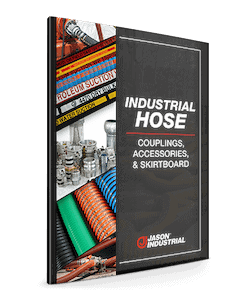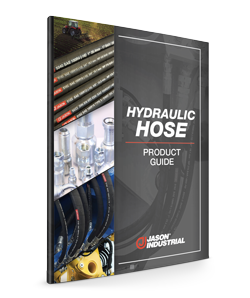Preventative maintenance is the key to ensuring your industrial and hydraulic hose systems have a long, functional lifespan. Along with standard operating procedures, consistent preventative maintenance efforts can keep your operators and managers apprised of the condition of each hose in the facility. Inspecting the hoses, replacing failing or worn components, maintaining an active data log, and having a steady inventory of key components are essential elements of every preventative maintenance plan. These action steps take aim at ensuring long-term optimization and cost-effective system management.
Incorporate these six tips into your preventative hose maintenance plan.
1. Visually inspect the hose and fitting.
Visual inspections are one of the most important—and one of the simplest—steps of preventative maintenance. Regularly inspect the hose system and its fittings for damage, disrepair, or signs of unusual performance problems on a daily, weekly, or monthly basis as appropriate for your application.
We recommend compiling a list of signals that trigger a complete shutdown and hose assembly replacement so your employees can quickly mitigate problems. Those signals should include:
- Leaks in the hose or around the fittings
- Fittings displacement or slippage
- Damaged fittings, including cracks, corrosion, and other visible damage
- Damaged hoses, including signs of cracks or charred surfaces and unusual hardness or stiffness
- Kinks, twists and flattened or crushed portions in the hose
- Damaged covers, including cuts, abrasions, blisters, and cracks, especially if the damage exposes the reinforcement (which requires replacement as soon as possible)
- Loose, soft, or degraded covers
Keep in mind that no hose should ever be repaired or reused as damage and deterioration of the hose may compromise its ability for use at its original design capability.
2. Track the lifecycle of each hose.
Each industrial and hydraulic hose—and its fittings—has a known expected lifespan. Each end application is at least somewhat unique and requires consideration as to how long the hose assembly should last. Ask your manufacturer or supplier about that lifespan and the ideal interval for inspections and tune-ups. Tailor the preventative maintenance schedule to the individual components to allow your facility’s inspectors to perform efficient, optimal maintenance. At each stage of the lifespan, look for signs of cuts, kinks, corrosion, or deterioration that match the life stage of the part. We recommend that this be documented in a log of the part’s condition over time. Your facility inspectors can then monitor for increases in damage and see trends in performance. Strongly consider permanently tagging or other suitable means of marking the hose assembly. This will also assist in signaling when a hose should be inspected and replaced.
3. Perform functionality tests.
Test each hose system by operating it at its maximum rated working pressure and checking it for leaks or problems. During this test, make sure any system surges also are below the maximum permissible pressure and that personnel maintain a safe distance from the equipment in the event of a malfunction.
Never inspect a hose by being in direct physical contact with a hose under pressure. Fluid injections can cause severe injury.
4. Establish consistent replacement intervals.
Even with good preventative maintenance and optimal system operations, parts of the hose system will break down over time. The elastomeric seals, for example, will start to harden, wear, or turn brittle due to both age and frequent exposure to heat and pressure. Replacing these parts anytime the hose is removed helps keep the system as a whole in good condition and doesn’t require unscheduled downtime for troubleshooting and repairs. It prevents failures that could result in injuries or loss of production.
5. Analyze the data.
During each step of your facility’s preventative maintenance program, keep a running record of the assembly’s condition, any parts replaced or repaired, and even that regular inspections occurred without the need for adjustment. All of this data allows your company to monitor the long-term performance of the system and see if the system is performing as expected. Analyzing the data also can help your company determine if it’s time for a new design or system.
When properly equipped, destructive testing, or testing replaced parts to determine how much strain or continued use they can handle, is also a profitable analysis that can help your company reconfigure replacement schedules.
6. Be prepared with spares.
As opposed to having to turn off the machines and cause delays for known or anticipated repairs because you don’t have the parts on hand, maintain an inventory of spare parts. A smart analytics system, combined with your preventative maintenance data, can recommend the right quantities of which components to keep on-site for fast replacement. Along with an in-house inventory, you can order replacements in preparation for scheduled parts replacement tasks and streamline the entire process.
Contact Jason Industrial for Hose Supplies and Accessories
At Jason Industrial, we supply rubber and thermoplastic industrial hoses. We also supply the couplings, fittings, and accessories our clients need to keep their entire hose system in good repair throughout its lifespan. We’re proud to serve an extensive number of industries with hoses and parts tailored to a wide range of applications. Contact our team today to learn more or request a quote to start your order.





